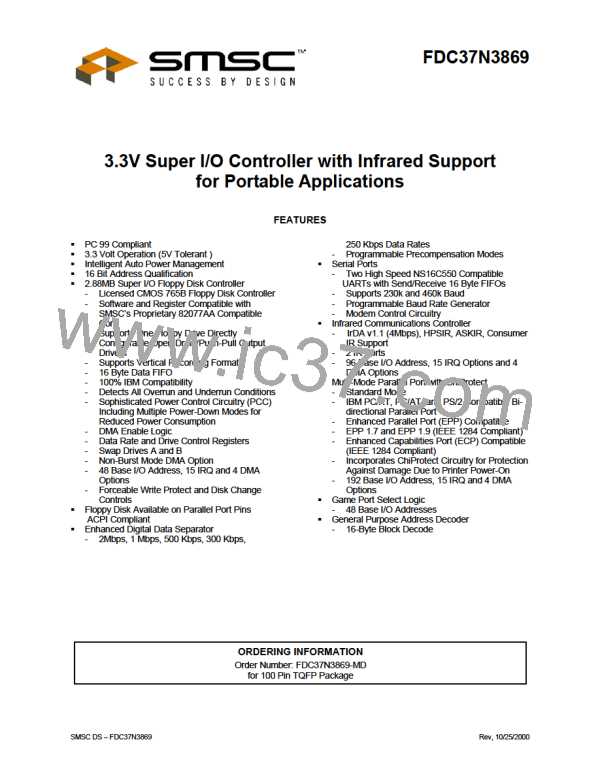READ DELETED DATA
This command is the same as the Read Data command, only it operates on sectors that contain a Deleted Data
Address Mark at the beginning of a Data Field.
Table 37 describes the effect of the SK bit on the Read Deleted Data command execution and results.
Except where noted in Table 37 the C or R value of the sector address is automatically incremented (see Table 38).
Table 37 - Skip Bit vs. Read Deleted Data Command
DATA ADDRESS
MARK TYPE
RESULTS
ENCOUNTERED
SK BIT
VALUE
SECTOR CM BIT OF DESCRIPTION OF
READ?
ST2 SET?
RESULTS
0
Normal Data
Yes
Yes
Address not
incremented. Next
sector not
searched for.
Normal
0
1
Deleted Data
Normal Data
Yes
No
No
termination.
Normal
Yes
termination. Sector
not read
(“skipped”).
Normal
termination.
1
Deleted Data
Yes
No
READ A TRACK
This command is similar to the Read Data command except that the entire data field is read continuously from each
of the sectors of a track. Immediately after encountering a pulse on the nINDEX pin, the FDC starts to read all
data fields on the track as continuous blocks of data without regard to logical sector numbers. If the FDC finds an
error in the ID or DATA CRC check bytes, it continues to read data from the track and sets the appropriate error bits
at the end of the command. The FDC compares the ID information read from each sector with the specified value
in the command and sets the ND flag of Status Register 1 to a “1” if there is no comparison. Multi-track or skip
operations are not allowed with this command. The MT and SK bits (bits D7 and D5 of the first command byte
respectively) should always be set to “0”.
This command terminates when the EOT specified number of sectors has not been read. If the FDC does not find an
ID Address Mark on the diskette after the second occurrence of a pulse on the IDX pin, then it sets the IC code in
Status Register 0 to “01” (abnormal termination), sets the MA bit in Status Register 1 to “1”, and terminates the
command.
SMSC DS – FDC37N3869
Page 45
Rev. 10/25/2000

 SMSC [ SMSC CORPORATION ]
SMSC [ SMSC CORPORATION ]